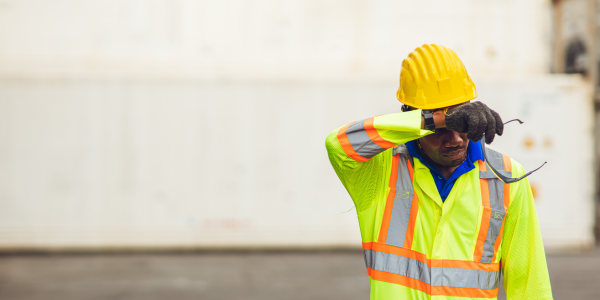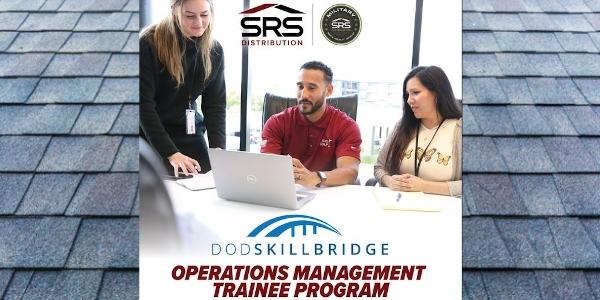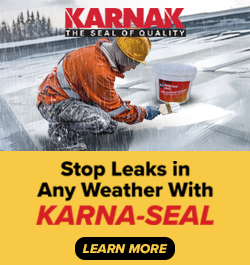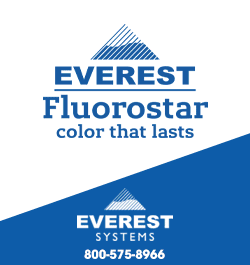UP TO THE MINUTE
Navigating Maryland's new heat stress standard: What roofing contractors need to know

By Cotney Consulting Group.
Heat stress regulations are evolving to ensure contractor's safety.
As of September 30, 2024, Maryland became the first state on the East Coast to enact a Heat Stress Standard through the Maryland Occupational Safety and Health Administration (MOSH). This move places Maryland among a growing group of states prioritizing worker safety in the face of rising temperatures. This new regulation marks a significant shift for roofing contractors, ensuring businesses focus on protecting workers exposed to high temperatures. Understanding these rules is essential for compliance and key to fostering a safer work environment and reducing the risks of heat-related illnesses.
Heat stress regulations across the U.S.
While Maryland may be the first on the East Coast to implement such a standard, other states have been at the forefront of heat protection policies for workers. As of August 2024, only five states — California, Minnesota, Oregon, Washington and Colorado — had specific heat stress standards. These state rules vary in scope and coverage, reflecting workers' unique conditions in different environments.
For example, Minnesota's standard applies solely to indoor workplaces, while Washington's only covers outdoor work. California, which initially covered only outdoor workplaces, introduced an indoor heat illness standard in June 2024, much like Oregon's approach. The methods used to trigger protections against heat hazards also differ. Minnesota considers the exertion level of work, using Wet Bulb Globe Temperature thresholds based on activity type. In contrast, California's heat illness prevention protections are triggered when temperatures reach 80°F, while Washington factors in both temperature and the breathability of clothing. Oregon uses a heat index trigger of 80°F. These variations highlight the complexity of managing heat exposure across different work settings.
Regarding high-heat protections, states like California and Colorado activate additional measures at 95°F, while Washington and Oregon set the threshold at 90°F. The specific requirements for roofing contractors may differ across states, but the need to protect workers from heat stress remains universal.
Scope and key elements of Maryland's heat stress standard
Maryland's Heat Stress Standard applies to all employers with workers exposed to a heat index of 80°F or higher, indoors or outdoors. The heat index combines temperature and humidity, two critical factors in determining how heat affects the human body. The standard includes certain exceptions, such as emergency operations and situations where exposure is limited to 15 minutes per hour.
This rule covers nearly all job sites for roofing contractors, as workers are frequently exposed to high temperatures for prolonged periods. Whether a team is working on a flat commercial roof or a steep-sloped residential project, the heat index can quickly climb to hazardous levels. Understanding and implementing these new regulations is essential for protecting your crew and avoiding costly penalties.
Key components of compliance
To comply with MOSH's new regulation, contractors must implement several key elements designed to mitigate heat-related risks. Here's a breakdown of the most critical aspects:
1 - Temperature monitoring
Roofing contractors must now monitor the heat index in their work areas regularly. This can be done in several ways, including using the National Weather Service data or the NIOSH Heat Safety Tool app. For indoor environments without ventilation, direct temperature and humidity measurements are required.
Incorporating real-time data collection into daily operations will be essential for roofing businesses. Monitoring the worksite consistently and adjusting work schedules or safety measures based on these readings can help keep crews safe from heat-related incidents.
2 - Providing water and breaks
Access to water and hydration are key components of this new standard. Contractors must provide at least 32 ounces of water per hour per worker at no cost and be located as close to work areas as possible. Solutions such as strategically placed water stations or hydration packs might be needed for roofing projects where mobility can be limited.
Additionally, shaded break areas must be provided or alternative cooling measures must be implemented if shading is impractical. These requirements ensure that workers have the opportunity to escape the sun and cool down during breaks.
3 - Rest breaks and high heat protocols
As temperatures rise, so too do the necessary precautions. When the heat index reaches 90°F, mandatory rest breaks must be introduced — 10 minutes for every two hours worked. When the heat index reaches 100°F, the break time must increase to 15 minutes per hour.
Roofing contractors may need to adjust job schedules to comply with these requirements. Starting jobs earlier in the day or shifting work to cooler hours can help avoid peak heat periods. Incorporating rest breaks into existing schedules allows contractors to maintain productivity while adhering to the new rules.
4 - Acclimatization
New workers or those returning after seven or more days of absence must undergo a gradual acclimatization process. This adjustment period allows their bodies to adapt to the heat, reducing the risk of heat-related illnesses. Roofing contractors must create an acclimatization schedule, which could involve increasing exposure to heat over 5 to 14 days or following NIOSH recommendations for gradual adaptation.
5 - Emergency response and training
An emergency response plan is another essential requirement. Roofing worksites are often remote or elevated, making quick access to emergency medical services challenging. A clear plan must be in place to handle symptoms of heat exhaustion or heat stroke, including ensuring effective communication at all times.
Training is critical to this effort. Workers and supervisors must be educated in a language they understand about the risks of heat exposure, how to prevent heat illness, and how to respond when symptoms arise. Training must be conducted annually or whenever a new employee joins the crew.
The federal outlook: Preparing for future regulations
Federal OSHA is also developing its own Heat Injury and Illness Prevention Standard, which could eventually complement or supersede state-level regulations like Maryland's. Roofing contractors should stay updated on these developments, as federal rules could bring additional requirements to comply with.
Maryland's new Heat Stress Standard sets a high bar for worker safety, especially in industries like roofing, where exposure to extreme temperatures is an everyday challenge. Compliance with the standard will involve significant changes, including monitoring temperatures, providing water and shaded breaks, and adjusting work schedules.
By adopting these practices, roofing contractors can avoid penalties and improve worker health and safety, which translates to better job performance and reduced risks of heat-related incidents. As Maryland leads the charge on the East Coast, it's time for contractors to prioritize heat safety and prepare for the evolving regulatory landscape that's focused on keeping workers safe from the dangers of heat exposure.
Learn more about Cotney Consulting Group in their Coffee Shop Directory or visit www.cotneyconsulting.com.
Recommended For You

SRS partners with DOD SkillBridge training program
Read More ...Beacon Continues Dedication to Veterans With Launch of 5th Annual Beacon of Hope
Read More ...
Big 3 Roofing Companies Posted 31% Revenue Gain in ’22, Well Ahead of Lumberyards and Big-Box Home Centers, Webb Analytics’ Construction Supply 150 Finds
Read More ...
















Comments
Leave a Reply
Have an account? Login to leave a comment!
Sign In